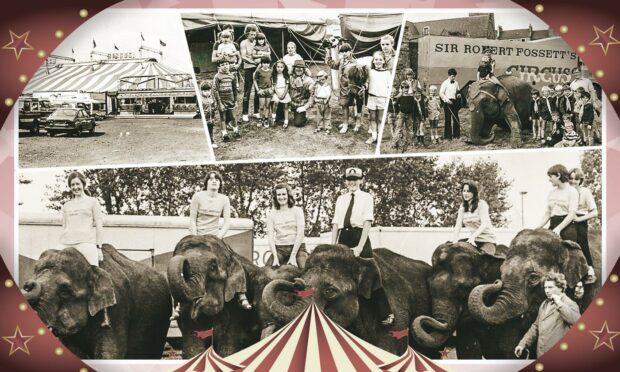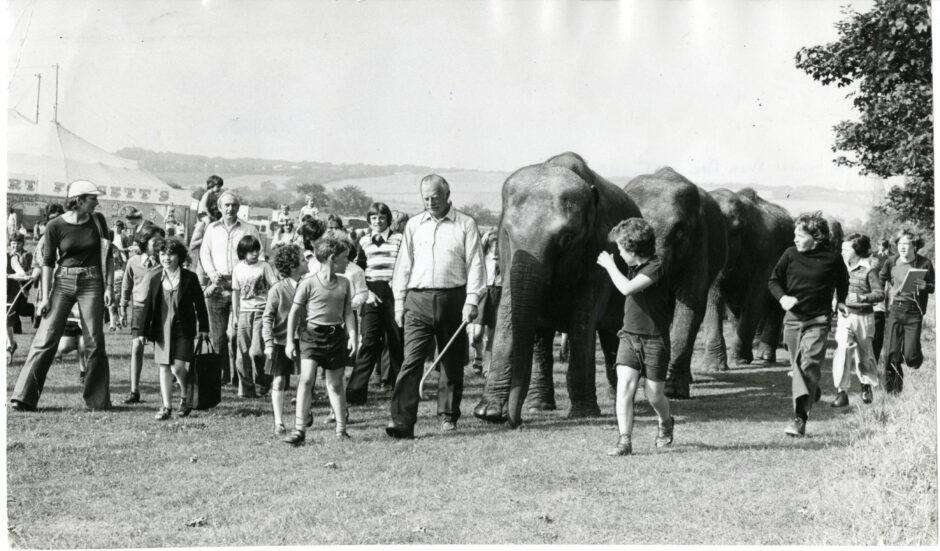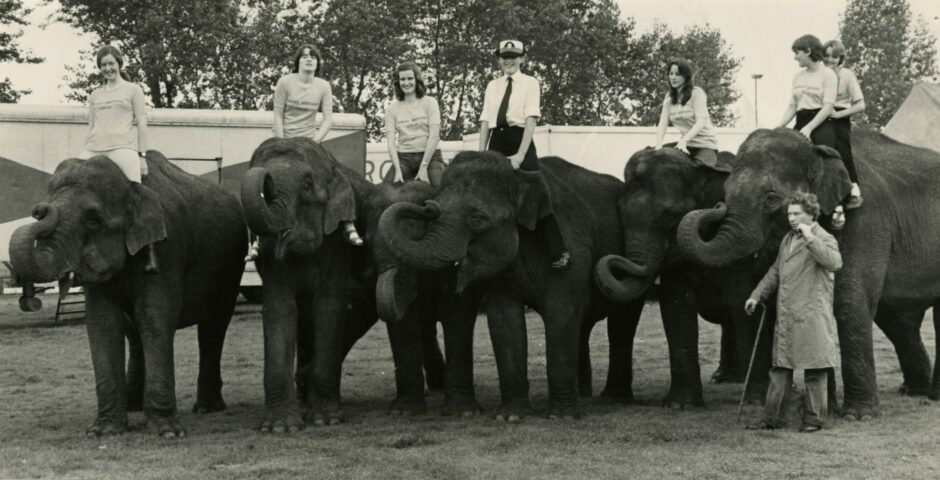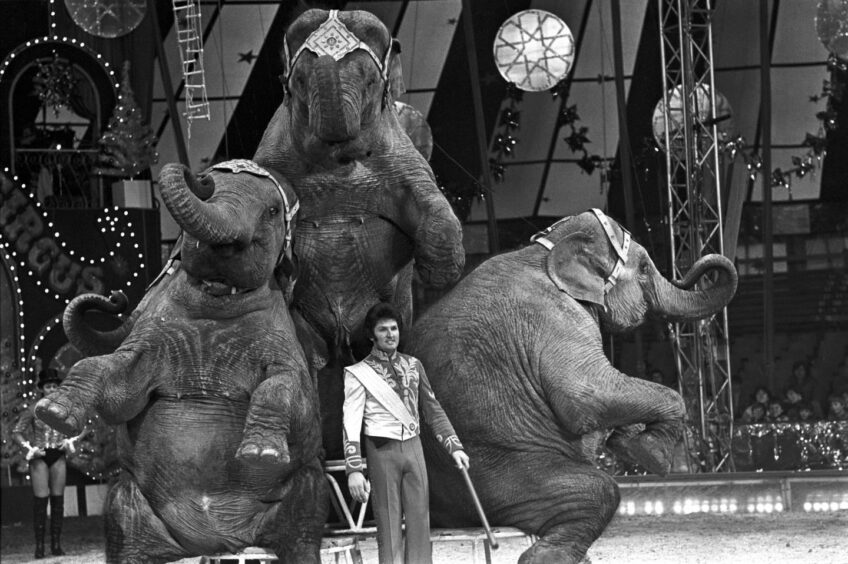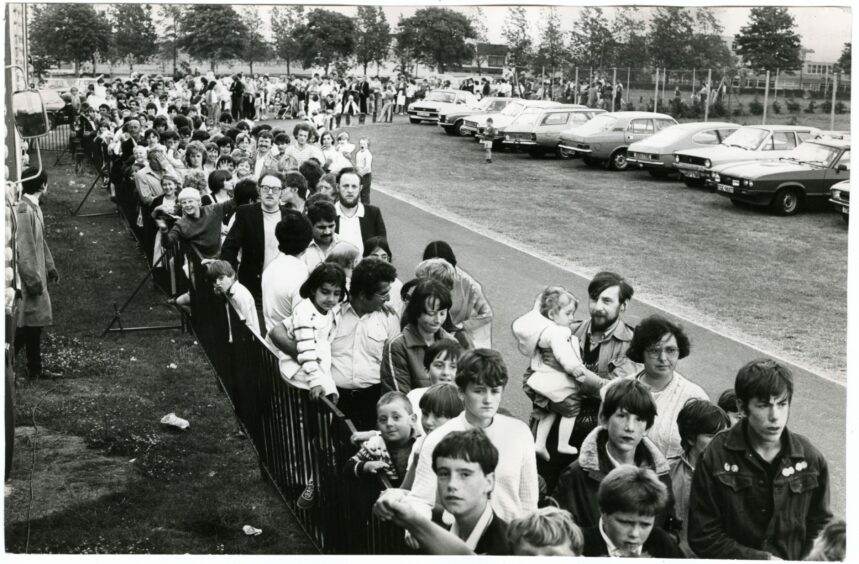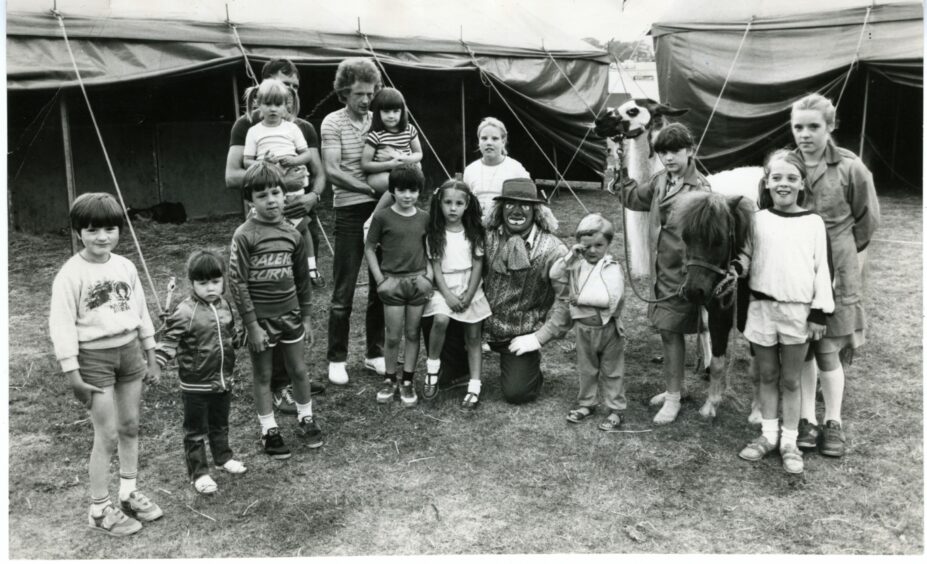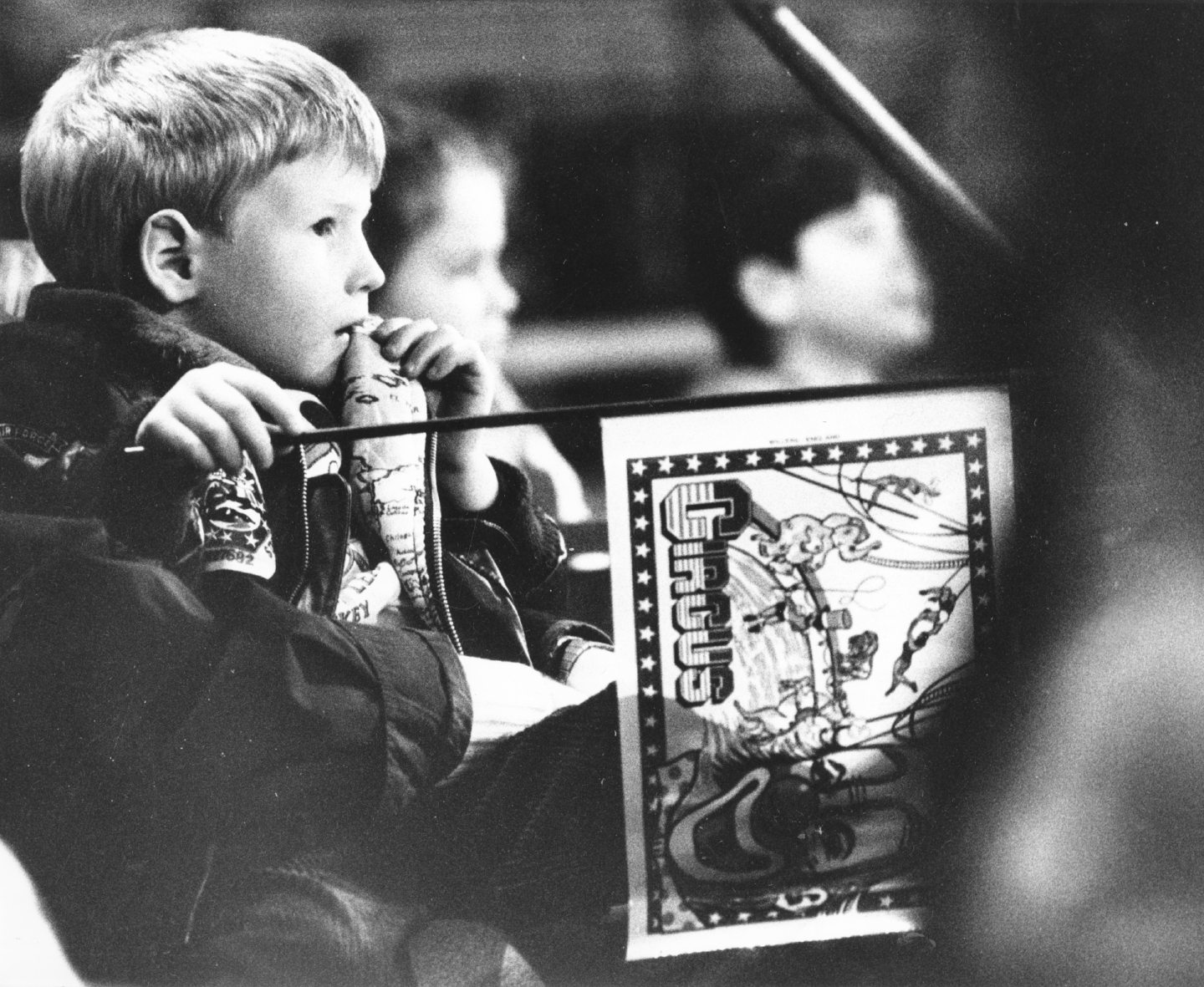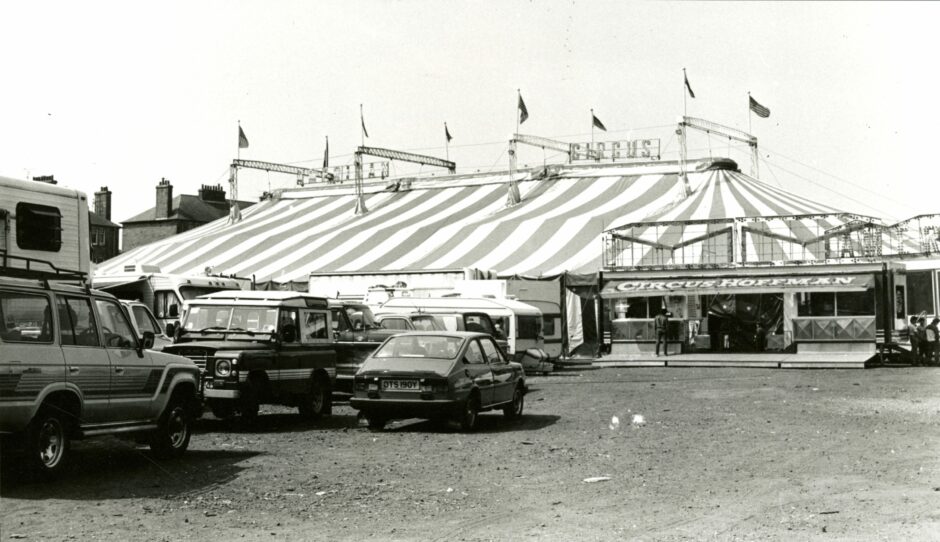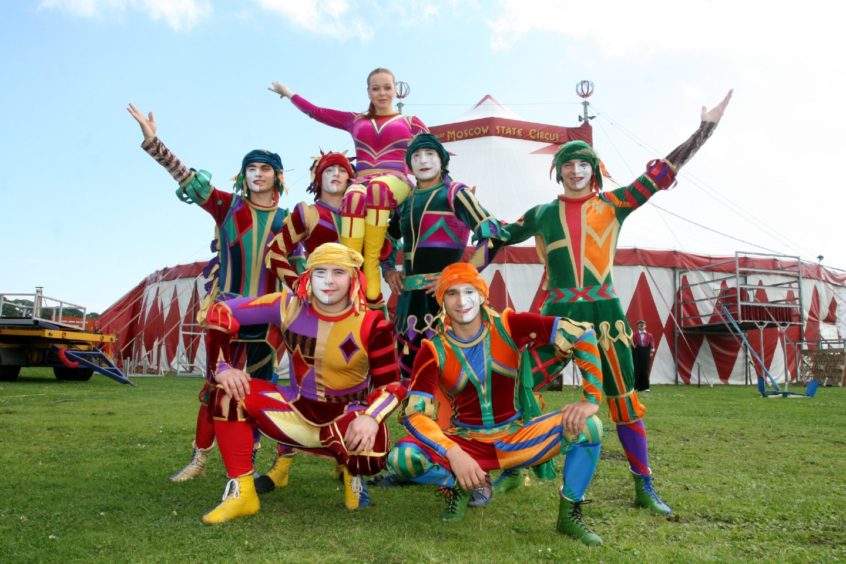Dundee audiences crammed into tents to witness incredible feats when the circus was a major form of entertainment in the city.
Circuses used to arrive in Dundee in style, unpacking canvas tents and wild animals from the trains that carried them around the country.
The old-fashioned travelling circuses including Bertram Mills’, Robert Brothers, Chipperfield’s and Fossett’s used to pitch up in parks and public places, and always brought a large menagerie of animals as the highlight of their performances in the city.
During the 1970s and early 1980s Fossett’s would arrive in a whirlwind of excitement, as African and Indian elephants were paraded through town, including in Caird Park and Gussie Park.
In 1979 the Robert Brothers’ Circus even promoted Dundee’s Road Safety Week by leading five elephants through the city, from Tay Bridge station to Caird Park.
Lions, bears and elephants often featured on their programmes but one year Billy Smart’s Circus generated particular interest when it created two special Scottish animal acts for its tour north of the border.
Presented by the legendary showman’s oldest son, Billy Smart junior, one featured a herd of Highland cattle and the other, in marked contrast, a troupe of miniature Shetland ponies.
The ponies were trained to present a classic liberty horse act on a tiny scale.
The highlight of their appearance came in the tartan-decked finale to their act, when the Highlanders re-entered and the Shelties ran nimbly between the legs and under the bellies of the massive, shaggy beasts.
Many youngsters were so thrilled by the excitement and spectacle of these shows that they dreamed of running away with the circus.
Attitudes, rightly, started to change in the mid-1980s.
Pressure increased on animal circuses.
In July 1988 members of Dundee Animal Rights Group held a protest outside the Austen Brothers’ Circus.
Paul Smith pledged demonstrations outside the circus throughout its stay.
He said: “We will be outside every performance, with placards, handing out leaflets to customers.
“Circus animals are made to perform tricks completely against their nature.
“In addition, the stresses placed on the animals, by removing their normal patterns of behaviour, are enormous.”
It was the beginning of their two-week run at Gussie Park.
The protest followed several pleas that the organisation had made to the district council of Dundee not to allow the circus to come to the city.
The group’s objection was one of a number lodged by those who were concerned for the welfare of circus animals.
Animal rights activists said Gussie Park was in a “dreadful” condition with pipes and rubble scattered around and insufficient room for the animals to exercise.
Battle lines were drawn.
However, the council gave the circus the go-ahead.
More than 1,500 children screamed with delight inside the big top and the box office staff could still hear the tills ringing on the first night.
Run by Michael Austen and his brother, the circus had three elephants, two Bengal tigers and a troupe of horses performing that evening in Dundee.
“Listen to that,” said Mr Austen.
“They absolutely love it!
“These kids don’t want swimming pools or tennis lessons or whatever else it is the council thinks is good for them. They want to come to a circus and have a good time.
“There’s nothing else like it!”
Those sentiments were shared by other troupes that visited Dundee after 1988 but time was running out for animal circuses by the 1990s.
Dundee later imposed a ban on performing animals.
Circuses themselves made a conscious decision to remove animals from shows because of strict regulations as well as changing public sentiment.
The appetite for watching animals performing has vanished in the 2000s.
Those circuses had to respond to suit modern attitudes.
While travelling circuses have been regular visitors to the city in recent years, the stars of the show have certainly changed and now feature an all-human cast.
Long may they continue to roll up in Dundee.
More like this:
Jockie Smith: Legendary Dundee pet shop owner with monkeys for sale
The glamour of the flesh-and-blood theatre in early 1900s Dundee
